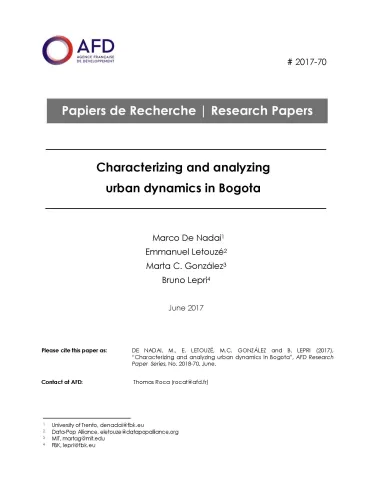Share the page
Characterizing and analyzing urban dynamics in Bogota
Published on

Containing crime without affecting the livability of the urban environment is a major challenge in our society. Traditionally, researchers relate crime to socio-economic disorganization and people’s routine activity, as it influences effective control and suitable targets. An important open question is what the role the urban fabric plays. Although empirical research has shown that the physical urban environment is an essential factor for urban vitality and health, we lack evidence of any clear relationship between the structural characteristics (e.g. roads and land use mix) of neighborhoods and crime. Here, by using open data and mobile phone records, we explore this link with a spatial regression model that analyzes the environmental and the social conditions to which each part of the city is exposed. We found that physical characteristics of the city connected to higher urban diversity better explain the emergence of crime than traditional socio-economic conditions and, together, physical characteristics and socio-economic conditions improve the performance of previous approaches. This result suggests that urban diversity and natural surveillance theories play an important role in the proliferation of crime, and the knowledge of this role can be exploited in urban planning to reduce crime.
Useful Information
-
Authors
-
Marco De NADAI, Emmanuel LETOUZE, Marta C. GONZALEZ, Bruno LEPRI
-
Coordinators
-
Thomas ROCA
-
Edition
-
70
-
Number of pages
-
14
-
ISSN
-
2492 - 2846
-
Collection
-
Research Papers
